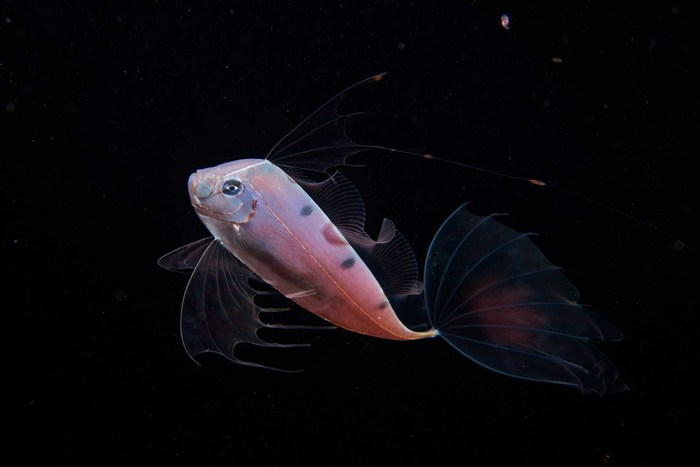Young specimens of Trachipterus trachypterus, commonly known as 'Ribbon Fish', would survive thanks to Batesian mimicry: to increase its chance of survival it would imitate jellyfish, keeping potential predators at bay. This was stated in a study entitled "Relative Influence of Environmental Factors on Biodiversity and Behavioral Traits of a Rare Mesopelagic Fish, Trachipterus trachypterus (Gmelin, 1789), in a Continental Shelf Front of the Mediterranean Sea - published in the Special Issue" Coastal Fish Research " of the "Journal of Marine Science and Engineering", MDPI group, among whose authors there is also an ichthyologist and research fellow of the Department of Biological, Geological and Environmental Sciences of the University of Catania, Francesco Tiralongo.
"This is the first time - explains the Etna researcher - that the behavior of the juveniles of this Mesopelagic species considered rare is observed in detail and in the environment. We have been able to hypothesize the presence in the youth of this species of Batesian mimicry. In other words, to increase its chance of survival, the small fish imitates jellyfish, keeping potential predators at bay. "
The research team supervised by Tiralongo and composed of other Italian and foreign researchers, brings to light new observations of ecological relevance relating to the study area, which is represented by an upwelling zone, i.e. a rise in nutrient-rich deep waters, along the coast of the island of Ponza in the Tyrrhenian Sea. "From the study - adds Tiralongo - it emerges that the direction of the currents and the moon phases can significantly influence marine biodiversity both in terms of abundance and behavior".
The Ribbon Fish survives by imitating the jellyfish
2020-08-05T13:55:36.791Z

Study published, among researchers also Catanese ichthyologist (ANSA)Young specimens of Trachipterus trachypterus, commonly known as 'Ribbon Fish', would survive thanks to Batesian mimicry: to increase its chance of survival it would imitate jellyfish, keeping potential predators at bay. This was stated in a study entitled "Relative Influence of Environmental Factors on Biodiversity and Behavioral Traits of a Rare Mesopelagic Fish, Trachipterus trachypterus (Gmelin...
